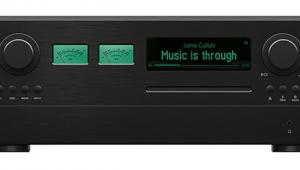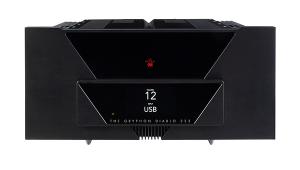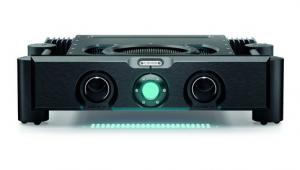McIntosh MA9500 Integrated Amplifier Page 2
McIntosh's beefy integrated had no problems with the Bowers & Wilkins 801 D4 loudspeakers [HFN Nov '21] resident in PM's listening room, connected initially through the 4ohm taps. This speaker is remorselessly revealing, and would give the MA9500 nowhere to hide. Thankfully, it didn't need to, although I found that switching to the 8ohm taps improved the tonal balance somewhat. There was a subtle boost to the bass, and everything got ever so slightly softer and sweeter.
This wasn't a big 'night-and-day' change, however, and the MA9500's intrinsically taut and detailed nature didn't go away. The brass stabs on ABC's 'The Night You Murdered Love' [Alphabet City; Mercury 832 391-2] were satisfyingly raw, without being hard. They had an earthy timbre, free of glare. I've heard other systems erring towards the latter, in an attempt to make the track sound sassy and impactful, but even through the 801 D4s, the MA9500 stayed just on the side of the righteous. As the lead character in Rob Reiner's seminal Spinal Tap movie famously said, 'there's a thin line between clever and stupid'!
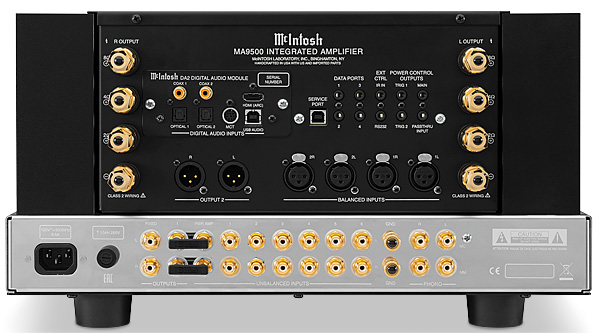
Balancing Act
Although I preferred using a dCS Vivaldi One [HFN Feb '18] as my audio source via the MA9500's balanced inputs, a Melco digital media server into the amp's internal DAC via USB wasn't too shabby. The sound was actually slightly more direct, but lacked a touch of the analogue input's space and subtlety. This was especially evident on Donald Fagen's 'Tomorrow's Girls' [Kamakiriad; Reprise WPCP-5210], where the USB input sounded very clean and insightful, but not quite as musically involving or intimate as the dCS source.
PM's Lab Report reveals only a moderate boost in power output over the MA9500's predecessor, but that's not to say this big-boned amplifier doesn't have serious guts. When called upon to do so, with a chunky sounding recording such as the ABC track, things really start to rock. I heard a fast and grippy sound; the programmed Linn drums enjoyed great attack and were tightly syncopated with the rhythm guitar and chiming keyboard work behind. The drum machine hi-hats shimmered away mechanically, locking everything in perfect time. The effect was thrilling, as you'd expect from a (then) state-of-the-art Bernard Edwards production.
Muscle Memory
So this amp can be lots of fun, but this character comes from its muscle rather than any tonal euphony. Take 'Something' by Booker T & The M.G.s' [McLemore Avenue; Stax SCD 8552-2] for example – a lovely, soulful and warm-sounding cover of George Harrison's Beatles classic. Here it sauntered along, but rather than focusing on the sumptuous vibe of the recording, the amplifier majored on its sense of groove and musical direction. It caught the lovely, relaxed gait that the Stax session players had – something unheard in pretty much any modern band.
Soundstaging is suitably expansive for a muscle amp. The MA9500 has a scale and a depth that reminds me why people buy high-end amplifiers, and it's matched by a physicality that gives you a very tangible and direct sense of the original recording venue and/or studio. This visceral grasp of musical proceedings is both good… and bad. Everything sounds vivid and high intensity, so much so that it can almost surprise you – as did the clapping on Booker T's 'Something', arriving from the far left of the mix.
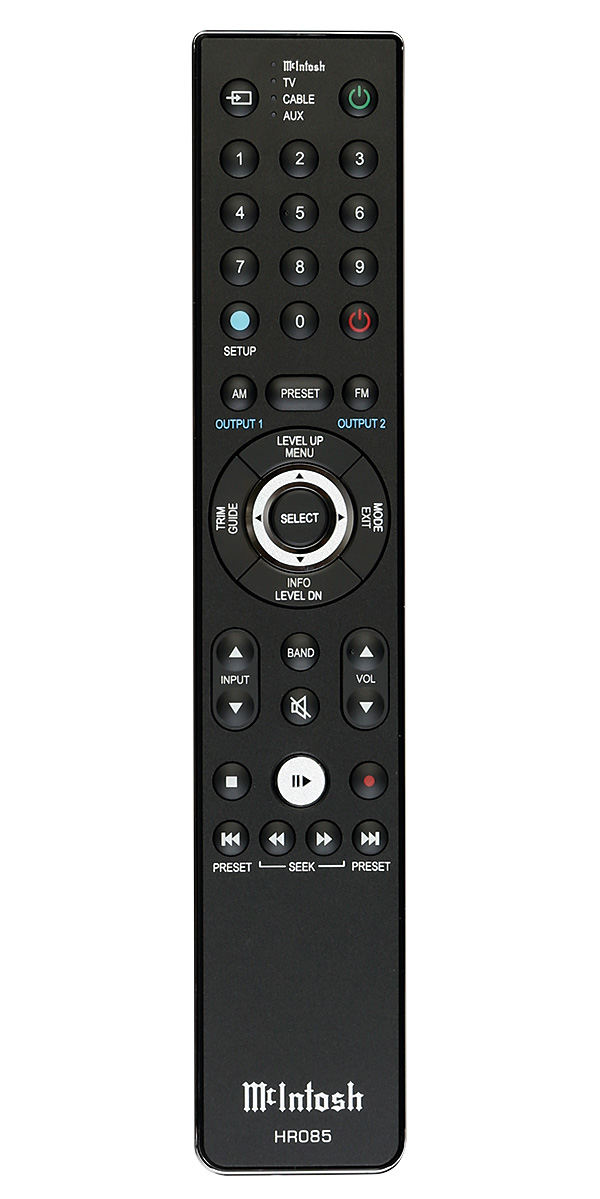
When fed with fast, hard electronic music, this amplifier further showed what it was all about. Elektric Music's 'TV' [Esperanto; SPV Records 084-92892] has powerful, elastic sub-bass which the MA9500 clung on to with real dedication, giving a wonderfully firm underpinning to this forgotten techno classic. One note of the bassline goes really low – subterranean almost – and this amp carried it with vice-like grip when most simply don't bother. Moreover, it showed no signs of fatigue when pushing out serious amounts of power, those meters swinging well east of due north!
Hi-Fi News Verdict
The MA9500 is a memorable all-round package, one that's distinctively and originally styled, highly versatile and hugely powerful too. Most importantly, it is engaging across a wide range of musical genres while its three output taps invite subtle sound tuning. Best partnered with smooth, warmish-sounding speakers, this mammoth Mac should make many prospective purchasers very happy indeed.







